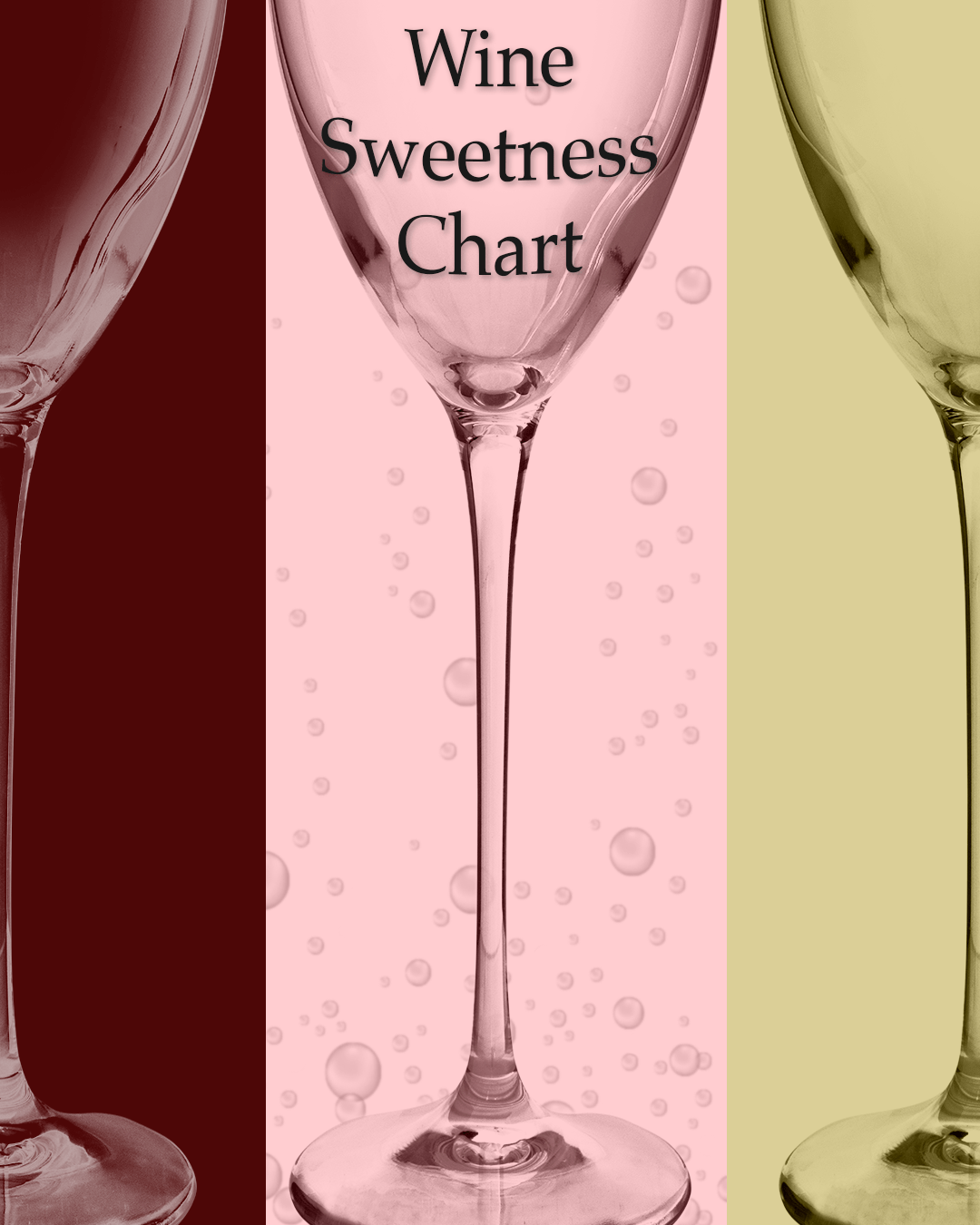Papi Wines Sweetness Guide: Every Bottle Ranked from Dry to Sweet
One of our customers asked us if we had a chart comparing the sweetness of Papi Wines. We realized this information might help you choose the right Papi Wine for you, so continue reading to find our ranking of Papi Wines from driest to sweetest and to learn what makes wine sweet or dry.
Note: Most of our wines are Demi-Sec, meaning "medium-sweet." Our Demi-Sec wines have 25-32 grams of residual sugar.
Papi Red Wines

Drier
Malbec
Pinot Noir
Cabernet Sauvignon
These varietals have more tannins than the rest of our reds, yet they are softly sweet, creating a well-balanced finish. Our full-bodied Papi Malbec is particularly drier due to its higher acidity. The Pinot Noir has a similar acidity with a medium body, and the beloved Cabernet Sauvignon’s tannins are a touch milder.
Sweeter
Red Blend
Merlot
Red Sangria
Passion Fruit Sangria
These varietals are more fruit-forward and have a sweeter finish. Our Red Blend is crafted from a blend of Cabernet Sauvignon, Carmenère, and Syrah grapes, resulting in a rich and complex flavor profile. Merlot is slightly tannic, while our Red Sangria is fresh with notes of cherries, plums, and sour strawberry and citric aromas. Papi Passion Fruit Sangria’s flavor profile evolves from red berries to citrus fruits, finishing with the taste of passion fruit and mango.
Sweet
Our Papi Sweets are sweeter than our Demi-Sec collection, but do not have enough sugar to be considered dessert wines. Yet, they pair well with sugary confections, whereas a drier wine would make for an unbalanced pairing. Our red Papi Sweets are sweet yet balanced, with vibrant flavors of dark fruits and berries.
Papi White Wines

Drier
Chardonnay
Sauvignon Blanc
Pinot Grigio
Papi Chardonnay, Sauvignon Blanc, and Pinot Grigio carry a prevalent to light acidity, respectively, making them suitable for palates that prefer white wines with a touch of tartness. Our Chardonnay’s creamy mouthfeel creates a smooth finish. These drier white wines pair well with mildly savory food like white meat, seafood, and salad.
Sweeter
Papi Moscato imparts notes of orange blossom, sweet peach, and nectarine, accompanied by a refreshing, light effervescence. Our White Peach Sangria offers a bright expression of sweet floral and slightly herbal notes on the nose. Both wines are suitable for palates that prefer a sweeter, floral white wine.
Sweet
Pineapple
Peach
Mango
Sweet Apple
Our white Papi Sweets wines are sweeter than our Demi-Sec collection, but do not have enough sugar to be considered dessert wines. They pair effortlessly with lighter indulgences such as flaky pastries and creamy fruit tarts.
Papi Sparkling and Pink Wines

Dry
Papi Prosecco captures the palate with stunning golden bubbles and the lovely sweetness of Muscat Blanc à Petits Grains grapes. Crafted in a D.O.C. (Denominazione di Origine Controllata, or “designation of controlled origin”), it hails from one of Italy’s more esteemed wine regions and is subject to stricter regulations to ensure quality. Our Sparkling Rosé is Extra Brut, meaning it has approximately 4 g/L of residual sugar, resulting in an extra-dry finish.
Sweet
Papi Rosé boasts aromatic notes of grapefruit, raspberry, melon, and flowers, and offers a crisp, sweet taste. Our Pink Moscato features notes of jasmine and fresh pear, complemented by a crisp acidity. Papi pink wines strike a balance between freshness and sweetness, creating a lush, refined finish.
What makes wine sweet or dry?
Intuitively, more sugar makes for a sweeter wine. But how does the sugar get there? The ripeness of the grapes at harvesting and the length of fermentation determine how much sugar ends up in your bottle.
A good rule of thumb is that wines with a higher alcohol by volume generally have less residual sugar.
Fermentation during the winemaking process leaves behind residual sugar, affecting the sweetness or dryness of the wine. Grapes have natural sugar in the form of glucose and fructose. The yeast consumes the sugar, converting it into alcohol and carbon dioxide. The fermentation process typically concludes once the yeast has consumed all the convertible sugar, or the level of alcohol becomes toxic to the yeast. Winemakers figured out how to stop fermentation, in turn, giving them control over the amount of sugar left behind and, thus, the dryness of a wine. The longer the wine ferments, the more sugar it converts, resulting in less sweetness and higher ABV.
A wine may have a relatively high sweetness percentage (above 3%), but the person drinking it may not perceive it as particularly sweet. Factors other than residual sugar, such as tannins and acidity, can create a drier impression, shaping how sweetness is experienced. Taste is ultimately personal, so we encourage you to explore different styles to learn and refine your preferences. Our variety packs are a perfect place to begin your wine journey.
 973-340-9300
973-340-9300


